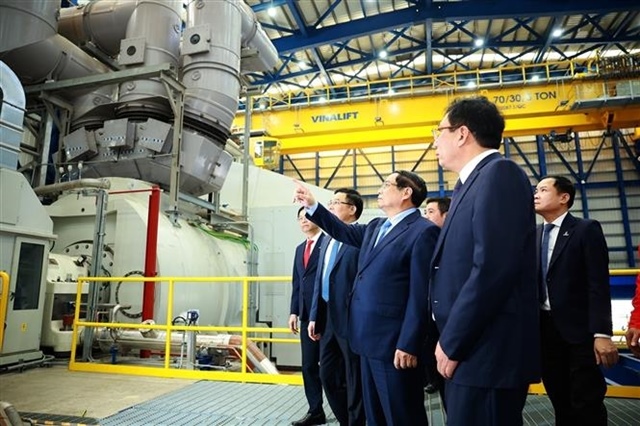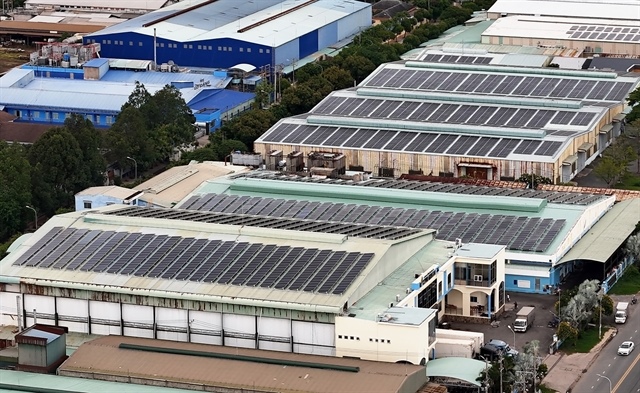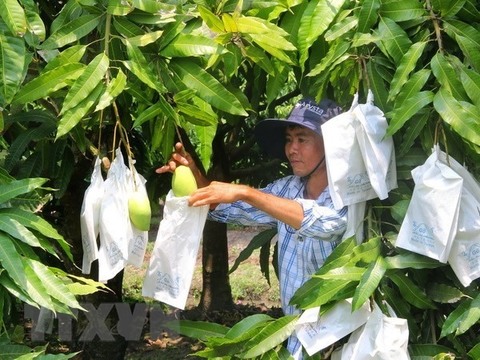Seeking FiT hike for bagasse power
Seeking FiT hike for bagasse power
The sugar industry is calling for increased feed-in tariffs for bagasse-fired power in hopes of luring additional investment to such renewable energy projects.
Lam Son Sugar JSC – one of Vietnam’s largest sugar companies – hesitates to expand its current bagasse-fired power generation activities, as the firm has been making a loss of VND600 (2.5 US cents) for every kilowatt-hour (kWh) of electricity it sells to Electricity of Vietnam (EVN).
A part of its integrated sugar production line, the company’s (Lasuco) bagasse-fired power generation system, designed with a capacity of 33.5 megawatts (MW), can generate more than 20MW at the peak of sugarcane crushing. Half of the output serves the sugar mills’ production, while the rest is sold to the national grid through EVN.
The feed-in tariff (FiT) for bagasse-fired power stands at only 5.8 cents per kWh after an adjustment prompted by petitions submitted to the government. Meanwhile, the total cost for each kWh generated by the firm amounts to VND1,900 (8.3 US cents), Lasuco’s general director Le Van Phuong told VIR.
“We are willing to increase our current bagasse-fired power output by doubling the power generation period from 150 days to 300 days per year, once the price for bagasse-fired power equals those set for other renewable energy sources like wind power and solar power,” said Le Van Tam, chairman of Lasuco.
Unfair treatment claims
The benefits of bagasse-fired power generation to companies like Lasuco cannot be denied, as it provides electricity for sugar production and enables the firm to sell the redundant power output to the national grid.
Additionally, the power generation helps handle the environmental impacts bagasse could have, as tonnes of bagasse were used as fertilizer in the 1990s, but were unpopular due to the unpleasant smell.
Notably, Lasuco, with its environmentally friendly power generation, gained a carbon credit deal in 2012 at a price of 7.8 euros ($9) per tonne of CO2 under the Clean Development Mechanism (CDM). The deal, which lasts for 20 years, enables Lasuco to earn an additional income of some VND10 billion ($430.000) every year.
Opportunities for boosting bagasse-fired power generation are abundant, as the combined sugarcane planting area of sugar mills nationwide amounts to 330,000ha, yielding at least 30 million tonnes of sugar cane a year. “Let’s imagine each tonne of sugar cane could generate 100 kWh of electricity; thousands of MW would be generated,” Lasuco’s Tam said.
However, not many sugar mills could profit from such plans. Only nine of the 40 sugar mills across the country have poured money into bagasse-fired power capabilities, with a total installed capacity of 400MW, and only 100MW are sold to the national grid, said Vu Ngoc Duc from the Institute of Energy under the Ministry of Industry and Trade (MoIT).
Insiders, sugar firms, and experts all blame the low FiT for blocking the rise of bagasse-fired power.
Pham Quoc Doanh, chairman of the Vietnam Sugarcane and Sugar Association (VSSA), told VIR that the FiT of 5.8 cents for bagasse-fired power was fixed in an “unusual way”, as the price was proposed and determined after MoIT delegations made fact-finding tours to evaluate bagasse-fired power generation at sugar mills.
MoIT officials called the bagasse-fired power generated by sugar mills a kind of co-generation, which allows sugar mills to benefit from producing electricity for their own production as well as selling the redundant output to the national grid. That is why bagasse-fired power must suffer the FiT of 5.8 cents, Doanh noted.
“That’s unfair for bagasse-fired power as the FiT is much lower than the level of 7.4 cents set for power fired by other biomass materials such as straw or sawdust”.
This is a waste of opportunities for bagasse-fired power to help in meeting Vietnam’s increasing electricity demand, Doanh lamented, asserting that it is a great pity that Vietnam has no power plants fired by straw or sawdust as of yet, regardless of the FiT of 7.4 cents.
The chairman claimed that efforts should have been made to build bagasse-fired power plants in order to make full use of the available input materials.
Bagasse-fired power has been treated unfairly in comparison with other kinds of biomass-fired power, Doanh went on to say. Hence, the VSSA submitted a petition to the Government Office and the MoIT last year to increase the FiT for bagasse-fired power, but no relevant feedback or directions have been given so far, Doanh added.
“At a FiT of 5.8 cents, no one dares to make an investment in building bagasse-fired power plants which are self-contained and have no financial and technical linkages with sugar mills,” said Lasuco’s general director Phuong.
Lasuco still embraces bagasse-fired power, because the annual revenue [some VND40 billion ($1.76 million) per year] it brings can be used to make up for some costs of sugar production, Phuong added.
Phuong assumed that such an investment turns feasible and profitable if the FiT rises to at least 7.4 cents – equivalent to the existing price of other biomass-fired energy sources. However, even this level would be rather low compared to the FiT of 10.8 cents set in Thailand.
Adam Ward, country representative of the Global Green Growth Institute (GGGI) in Vietnam, said that an expansion of bagasse-fired power generation and biomass energy in general is needed to meet Vietnam’s electricity demand as well as to help the Vietnamese sugar industry further increase its competitiveness with overseas rivals, including those from Thailand.
Ward said Vietnam needs to increase the current FiT for bagasse-fired power to a minimum of 7.4 cents, to be consistent with other biomass energy sources, which would help smooth the progress of the market.
In a bid to support the promotion of bagasse-fired power generation in Vietnam, the German Agency for International Cooperation (GIZ) has implemented the Climate Finance Readiness Programme over the past three years, a part of which GIZ and GGGI jointly carried out pre-feasibility studies of bagasse-fired power generation at five sugar mills.



















